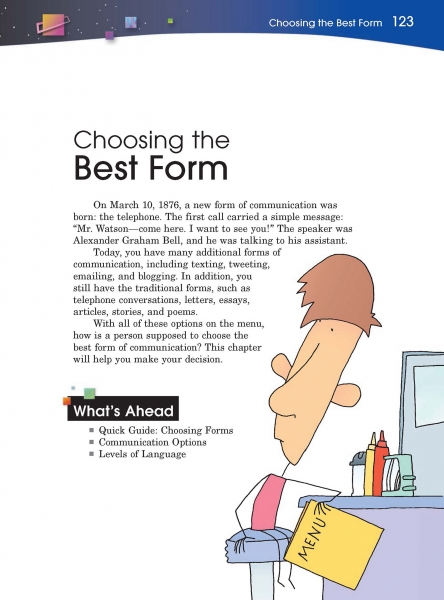Page 123 from

Start-Up Activity
This chapter introduces the continuum of communication (page 126). When you assign a particular form of writing, refer to the continuum to remind students about using different formality for different forms.
Discuss with students how technologies continue to change the way people communicate. During your discussion, ask questions to gauge your students’ understanding of communication, past and present:
- How did people communicate before the Internet, iPhones, and the like?
- How do people use cellular devices to communicate?
- What are your main methods of communication?
- How do you expect communication to change in the future?
Then read aloud and discuss the chapter introduction on page 123.
Think About It
“Never underestimate your readers’ intelligence or overestimate their information.”
—Anonymous

Start-Up Activity
This chapter introduces the continuum of communication (page 126). When you assign a particular form of writing, refer to the continuum to remind students about using different formality for different forms.
Discuss with students how technologies continue to change the way people communicate. During your discussion, ask questions to gauge your students’ understanding of communication, past and present:
- How did people communicate before the Internet, iPhones, and the like?
- How do people use cellular devices to communicate?
- What are your main methods of communication?
- How do you expect communication to change in the future?
Then read aloud and discuss the chapter introduction on page 123.
Think About It
“Never underestimate your readers’ intelligence or overestimate their information.”
—Anonymous

